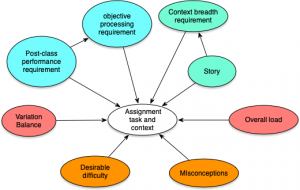 I’m a fan of the notion of ‘learning experience design’ (not so sure about platforms; I need to investigate them more ;). The idea of integrating effective education and engaging experiences is something I’ve been on about for a very long time. And I want to push it a little further. I want to talk about transformation.
I’m a fan of the notion of ‘learning experience design’ (not so sure about platforms; I need to investigate them more ;). The idea of integrating effective education and engaging experiences is something I’ve been on about for a very long time. And I want to push it a little further. I want to talk about transformation.
What am I talking about? So, I’ve previously referred to Pine & Gilmore’s concept of the Transformation Economy. That is, going beyond experiences (e.g. themed restaurants) to ones that change us. And I argue that’s what we do; we create (or should) experiences that give us new skills, new abilities to do. But I want to push it further.
Here I’m talking about deliberately using the idea of transformation as a learning design goal. Not just change, but leveraging the emotions as well as cognition to have the learner not just feel empowered, but transformed! This may sound like a lofty goal, fine for a TED Talk (just read the book; recommended), but is it practical for elearning? Well, that’s an interesting question.
Let me spin it another way: I do not think we should be shooting for an information dump and knowledge test. For two reasons: one is that it’s not inspiring. More importantly, however, it also isn’t effective. You end up with what cognitive scientists call ‘inert knowledge’. You’ll learn it and pass a test on it, but when it’s relevant in practice it won’t even get activated! Because you’ve never used it in ways like you practice.
I think if we are actively thinking about transformation as a goal, we might do a better job of thinking about the necessary practice and the emotional engagement. We can focus on thinking “what will lead to the transformation we want”, and “how do we make people want it and celebrate when they’ve made the breakthrough?” And I think this is a useful perspective.
Even for things like compliance, I’d suggest that we should be having visceral reactions like “Ok, I get it <bad behavior> is pretty heinous”, and “safety is important, and I commit to following these rules”. For more important things, you’d like them to feel “yes, I see, this will change how I do this!”
Yes, it’s ambitious. But why set ourselves limited goals? When I was teaching interface design, I maintained that if I accommodated the engineers lack of background in Psych, I’d get them only so far. If I pushed them, they’d end up farther than if I was conciliatory. Similarly, here, I think we’ll do a better job if we think ‘ambitious’, and end up not as far as we’d like. I’ll suggest that’s better than satisfactorily achieving mediocrity. Most importantly, I truly think we’ll do a better job of design if we strive for transformation.
And, if there’s nothing transformative about what we’re covering, should we really be using our resources? Let me put it another way: why shouldn’t we do this? Seriously, I’m asking. So, what’s your answer?

